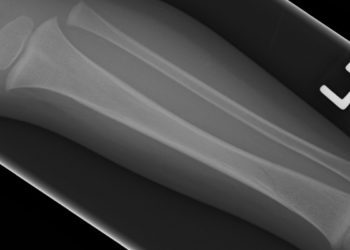“Hospital Report Cards” not associated with improved trauma mortality outcomes
Image: PD
1. Performance feedback on hospital mortality rates was not associated with improvements in trauma mortality outcomes.
Evidence Rating Level: 3 (Average)
Study Rundown: Performance feedback has been previously associated with improvements in physician performance. A retrospective review of a single, national, US trauma database was conducted to determine whether hospital performance feedback was associated with improved outcomes in trauma patients. Reporting of hospital performance was not associated with improvements in overall trauma mortality. Hospital performance feedback was not associated with a change in mortality rates regardless of the nature of the traumatic injury (blunt versus penetrating) or the severity of the patient’s condition (high-risk versus low-risk). Additionally, no effects of performance feedback on mortality were observed when stratified for previously low-, average-, or high- performing hospitals.
The strength of the study is the large cohort size over a number of hospitals. However, the study does not take into account the extent to which participating hospitals used the performance feedback to guide the quality improvement efforts. In conclusion, the clinical implication of this study is that hospital performance feedback may not be sufficient in improving performance quality.
Click to read the study in JAMA Surgery
Click to read an accompanying editorial in JAMA Surgery
Relevant Reading: Audit and feedback: effects on professional practice and healthcare outcomes
In-Depth [retrospective cohort]: This study reviewed in-hospital mortality rates of trauma patients using the National Trauma Databank (NTDB) from 2006 to 2010. The study compared the risk-adjusted mortality rates for trauma patients before and after the implementation of the NTDB hospital performance feedback reporting in 2008. Overall, 326,206 patients from 44 hospitals were analyzed over the five year period. Utilizing a regression discontinuity analysis, no significant effect was detected in in-hospital trauma mortality after the implementation of hospital performance feedback (OR: 0.89; 95% CI: 0.68-1.16, p=0.39). Similar findings were found when the cohort was stratified for nature of injury: penetrating (OR: 0.75, 95%CI: 0.44-1.28, p=0.29) or blunt trauma (OR: 0.91, 95% CI: 0.69-1.20, p=0.51) as well as severity of trauma injury: high-risk (OR: 0.88, 95% CI: 0.67-1.17, p=0.38) patients and low-risk (OR: 0.84, 95% CI: 0.57-1.25, p=0.40).
By David Wang and Andrew Bishara
More from this author: Preoperative vitamin D levels may influence post-surgical infection rate, HIV-infected infant potentially cured with antiretroviral therapy, High prevalence of head impact observed in senior falls, Pediatric appendicitis outcomes in Canada not superior to US
©2012-2013 2minutemedicine.com. All rights reserved. No works may be reproduced without expressed written consent from 2minutemedicine.com. Disclaimer: We present factual information directly from peer reviewed medical journals. No post should be construed as medical advice and is not intended as such by the authors, editors, staff or by 2minutemedicine.com. PLEASE SEE A HEALTHCARE PROVIDER IN YOUR AREA IF YOU SEEK MEDICAL ADVICE OF ANY SORT.







